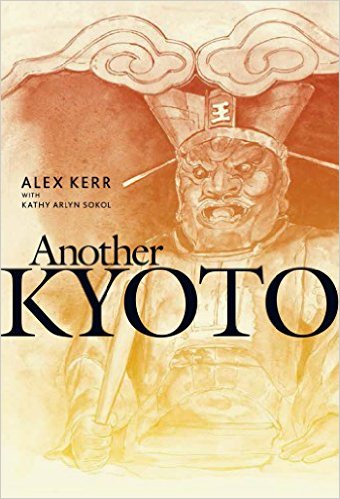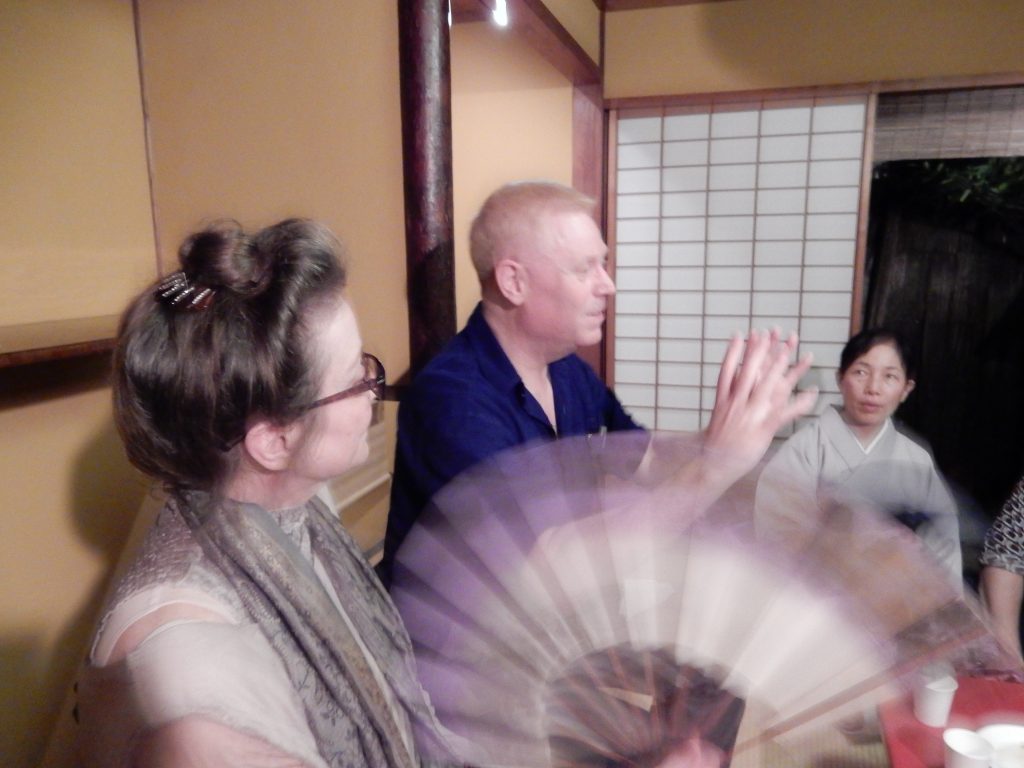‘Another Kyoto’: Alex Kerr’s roving thoughts on Kyoto as it stands today
by Stephen Mansfield, Special to The Japan Times. May 20, 2017

It appears that when the Japanologist Alex Kerr was a Rhodes Scholar at Oxford, his tutors despaired at his unorthodox use of his time there, with one particularly testy don complaining, “He researches only the ephemera that draw his interest,” going on to rail against Kerr’s fascination with “superstitions, myths and oddities.”
The tutor’s final word on this non-scholastic approach to research was that his young charge “waves these peculiar interpretations around as if they were sparklers.” In Kerr’s latest work, from which these anecdotes were taken, we get plenty of sparklers, small but telling illuminations into whatever engages the author’s curiosity. For this we must be grateful.
The book’s genesis began with temple-viewing trips to Kyoto in the company of author Kathy Arlyn Sokol, who expressed regret that Kerr’s various comments and insights during their outings could not be shared with the public at large. It was decided that Sokol would record and then transcribe and edit Kerr’s observations. The result is a book with a strong oral quality.
I feared this title might be a contemporary version of Basil Hall Chamberlain’s admirable but encyclopedic 1890 publication “Things Japanese: Being Notes on Various Subjects Connected with Japan” — or worse, a 600-page, 1949 compendium of cultural topics under the short title “We Japanese,” a book put out by the management of the Fujiya Hotel.
Kerr, however, while paying tribute to the enthralling details of a great city, doesn’t hesitate to lampoon its civic over-niceties. In commenting on its obsession with public safety, Kerr cites the example of Jinjoji Temple, where, as with many sacred spots, a beautiful stone staircase has been bisected by a modern steel bannister. In another swipe at cultural tinkering, the author instances a renewed gate at Kiyomizu Temple, finished in glaring vermilion paint. “Glowing psychedelically against a blue summer sky,” he notes, “the gate stands marooned amidst the granite like a solitary electric pole in the middle of a parking lot.” This kind of provisional, uncoordinated design reminded me of a red torii gate I once glimpsed — it was clumsily affixed to the entrance of a Kyoto love hotel.
If Kerr draws our attention to the city’s blemishes, he also celebrates its casually overlooked wonders. How many of us have walked through temple complexes without realizing that the staircases ascending to these compounds terminate in structures, such as pagodas and principal halls, which are symbolic of Mount Sumeru, the center in the Hindu and Buddhist cosmologies? I have often wondered whether the white stripes running along the surfaces of light-yellow temple walls were purely decorative, or contained meanings beyond the ocular. Again, Kerr illuminates us, explaining that these patterns signify high status, especially one particular version of the stripe, which indicates that a member of the Imperial family once served there.
In Kyoto, facts and meaning are often hidden in plain sight. Kerr’s gift is to make us stop and cast our eyes upward to a temple plaque, or to squint into the gloom of an abbot’s chamber, to a spot where a smudgy ink painting covers a rear wall. In this manner, we learn that slightly raised, brocade-edged tatami mats indicate the sitting spot for exalted personages, that the aging and darkening effects of wood used in private homes was accelerated by coating beams and pillars with persimmon juice, and that the word “sorin,” meaning “dense forest,” is also used in a literary sense to signify a Zen temple.

With topics that touch on aesthetics, it would be easy to lapse into the gilded writing styles of Okakura Tenshin or Walter Horatio Pater. One senses Kerr battling his own academic credentials, determined to avoid the highbrow. Because the content of this work originated in casual conversations and snatched observations, there is something fresh and chirpy about the text, even when it deals with the most esoteric or arcane of subjects.
Kerr’s combination of instinct and erudition serve him well. His years spent evaluating art works in pre-auction showings clearly served to sharpen his eye and cultivate an appreciation for fine detail and ability to trace the line of quality. The author views Japan as a “fertile breeding ground for repetitive detail,” a place where “compulsive behavior was constantly reinforced and refined, until it became art.” Perhaps this is a little like the tireless, trance-inducing replication of patterns in Islamic art. On the ability of art to transmit strong sensations, Kerr cites the special potency of objects soaked in antiquity. Considering one particular Enma-do (Lord of Hell) statue, an imperfect specimen dating from 1488, the writer identifies its strength as stemming from its “medieval horrific power” and the fact that it was originated in a “time of plague, famine, war, fire, and earthquake.”
No one would say that Kyoto is a beautiful city. Aldous Huxley compared it to a shambolic American mining town. In its specifics, however, the minutiae of small, exquisite gardens, aged screen paintings, timeworn temple gates, transoms and polished floors, we encounter a city suffused with beauty and meaning.
This Kerr shares with us in this rich book of intimate proportions.
Another Kyoto, by Alex Kerr with Kathy Arlyn Sokol.
336 pages
SEKAI BUNKA PUBLISHING, Nonfiction.
